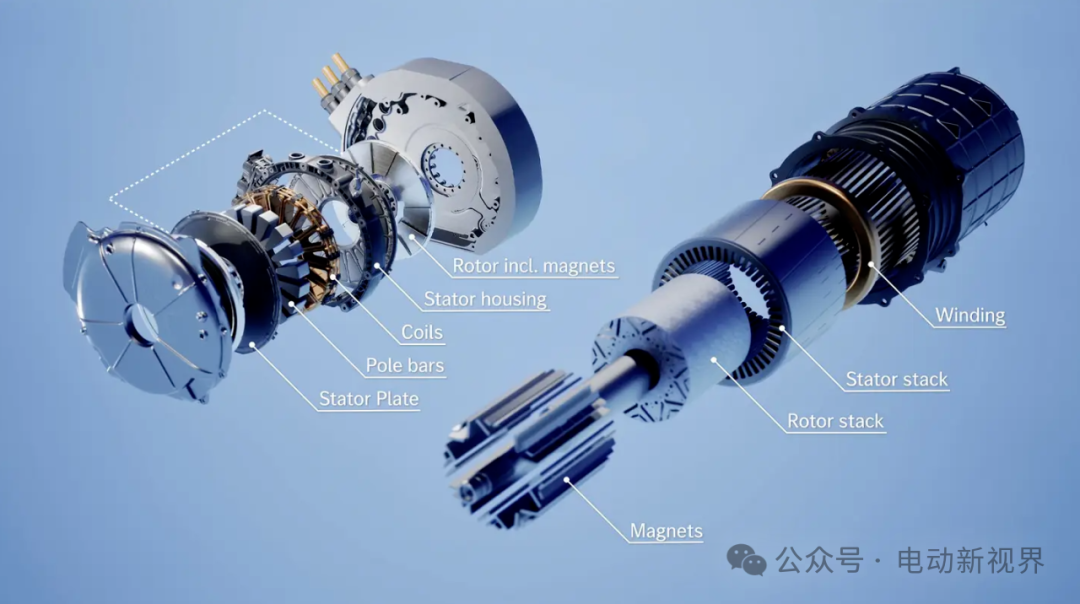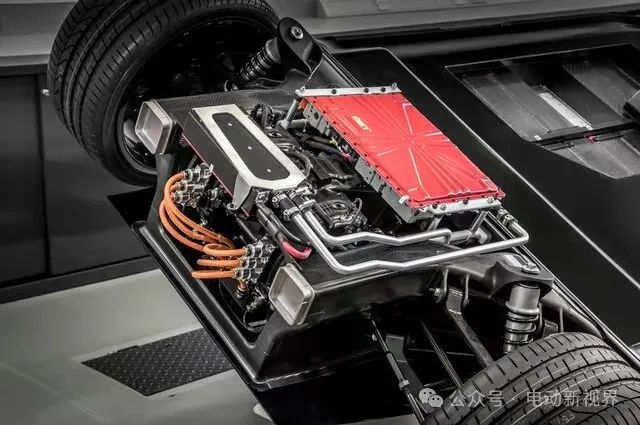Axial Flux Motor: A Groundbreaking Innovation in EV Drive Technology
![]() 02/08 2025
02/08 2025
![]() 396
396
Introduction
Amidst the global emphasis on environmental preservation and sustainable growth, electric vehicles (EVs) have emerged as the automotive industry's future trajectory. Nevertheless, the widespread adoption of EVs faces several hurdles, including driving range, charging time, lightweight design, and powertrain efficiency. While traditional radial flux motors have been prevalent in EVs, their inherent limitations are becoming increasingly evident. As an emerging motor technology, the axial flux motor, distinguished by its high power density, high efficiency, and lightweight design, stands out as a transformative solution for future EV drive systems.

This article delves into the technical principles, advantages, application scenarios, and future trends of axial flux motors in the EV domain, analyzing how they propel EV technology forward and present new industry opportunities.
I. Basic Principles and Structure of Axial Flux Motors
1.1 Working Principle of Axial Flux Motors
An axial flux motor is a type of motor where the magnetic field direction aligns with the motor shaft, contrasting sharply with the perpendicular magnetic field of traditional radial flux motors. In radial flux motors, the magnetic flux path travels radially from the rotor through the air gap to the stator and back. Conversely, in axial flux motors, the magnetic flux path extends axially from the rotor through the air gap to the stator and returns to the rotor, forming a closed loop.

The typical structure of an axial flux motor comprises a stator, a rotor, and an air gap. Both the stator and rotor are disc-shaped, with windings on the stator and permanent magnets or electromagnets on the rotor. When current flows through the stator windings, the generated magnetic field interacts with the rotor's permanent magnets, producing torque that rotates the rotor.

1.2 Structural Types of Axial Flux Motors
Based on the stator and rotor arrangement, axial flux motors can be categorized into the following main structural types:
1. "Single-Stator Single-Rotor Structure": This is the simplest axial flux motor structure, featuring a single disc-shaped stator and rotor. The magnetic field flows axially from the rotor through the air gap to the stator and back to the rotor, forming a closed loop. This structure suits low-power applications.
2. "Double-Stator Single-Rotor Structure": Here, the rotor is positioned between two stators, and the magnetic field passes axially through the air gaps on both sides of the rotor to the stators and back, forming a closed loop. This structure enhances the motor's power density and torque output.
3. "Multi-Disk Structure": A multi-disk axial flux motor consists of multiple stator and rotor discs, with the magnetic field forming a closed loop between them. Suitable for high-power applications, this structure significantly improves the motor's power density and efficiency.

II. Technical Advantages of Axial Flux Motors
2.1 High Power Density and Torque Density
Axial flux motors' most notable advantage lies in their high power density and torque density. The parallel magnetic field direction results in a shorter magnetic flux path and higher magnetic field utilization. Consequently, they generate greater torque and power in a smaller volume. Research indicates that axial flux motors offer 30% to 50% higher power and torque density compared to radial flux motors.

2.2 Lightweight Design
The disc-shaped structure of axial flux motors confers significant advantages in terms of volume and weight. The shorter magnetic flux path necessitates less iron core material, drastically reducing the motor's weight. For instance, the axial flux motor in the Mercedes-Benz Vision One-Eleven concept car weighs just one-third of a conventional motor with the same output power. This lightweight design not only lowers material costs but also facilitates the overall lightweight design of electric vehicles.

2.3 High Efficiency and Low Loss
Axial flux motors' shorter magnetic flux path and uniform magnetic field distribution lead to lower iron and copper losses, translating to higher efficiency. Furthermore, they often employ a fractional-slot concentrated winding structure, effectively reducing winding end length and copper losses. Experimental data shows that axial flux motors typically exhibit 5% to 10% higher efficiency than radial flux motors.
2.4 Installation Freedom and System Integration
Axial flux motors' compact structure and lightweight design offer significant advantages in installation and system integration. Unlike traditional radial flux motors, which are usually installed in the vehicle's front or rear, axial flux motors can be mounted inside wheels and even serve as brakes. This installation flexibility not only saves space but also enhances the design versatility of electric vehicles.

III. Application of Axial Flux Motors in Electric Vehicles
3.1 High-Performance Electric Vehicles
Axial flux motors' high power and torque density make them ideal for high-performance electric vehicles. For instance, the Ferrari SF90 Stradale and McLaren Artura utilize axial flux motors in their drive systems, offering powerful output and significantly improving acceleration and handling.
3.2 In-Wheel Motors and Distributed Drive Systems
Axial flux motors' compact structure and lightweight design make them well-suited for in-wheel motors. By mounting the motor directly inside the wheel, in-wheel motors eliminate the need for traditional drive shafts and differentials, enhancing driving efficiency and handling. Additionally, they enable torque vectoring control, further boosting vehicle dynamics.

3.3 Extended-Range Electric Vehicles
Axial flux motors' high efficiency and high torque at low speeds make them ideal for generator systems in extended-range electric vehicles. For example, Hangzhou Zhonghao Electric Technology Co., Ltd.'s axial flux range extender generator is one-third smaller and 30% lighter than market mainstream products, significantly improving power generation efficiency and system integration.
IV. Future Development Trends of Axial Flux Motors
4.1 Advances in Materials and Manufacturing Processes
With the continuous evolution of new materials and manufacturing processes, axial flux motors' performance will further improve. For instance, technologies like carbon fiber wound rotor disks and PCB stators can significantly reduce motor weight and losses, enhancing reliability and efficiency.
4.2 Multi-Disk Structure and Modular Design
Multi-disk axial flux motors and modular design will be crucial motor technology trends. By increasing the number of stator and rotor disks, motor power density and torque output can be significantly enhanced. Modular design allows for flexible adjustment of motor power and torque according to application requirements, catering to various electric vehicle platforms.
4.3 Intelligence and Integration
As intelligent electric vehicles advance, axial flux motors will be highly integrated with other electronic control systems to form intelligent drive systems. For example, they can be integrated with inverters and battery management systems for efficient energy management and power distribution. Additionally, they can be combined with autonomous driving systems for precise torque control and vehicle dynamics management.
V. Conclusion
With its high power density, high efficiency, and lightweight design, the axial flux motor emerges as a groundbreaking solution for future electric vehicle drive systems. As new materials, processes, and intelligent technologies develop, axial flux motors will play an increasingly pivotal role in the EV field, driving technological advancements and presenting new industry opportunities. In the future, axial flux motors are poised to become the mainstream drive technology for electric vehicles, ushering in a new era of automotive electrification.

Disclaimer: The above views are the author's personal opinions and do not reflect the platform's stance. In case of discrepancies, please contact the platform within 30 days for deletion or to discuss copyright authorization matters.








